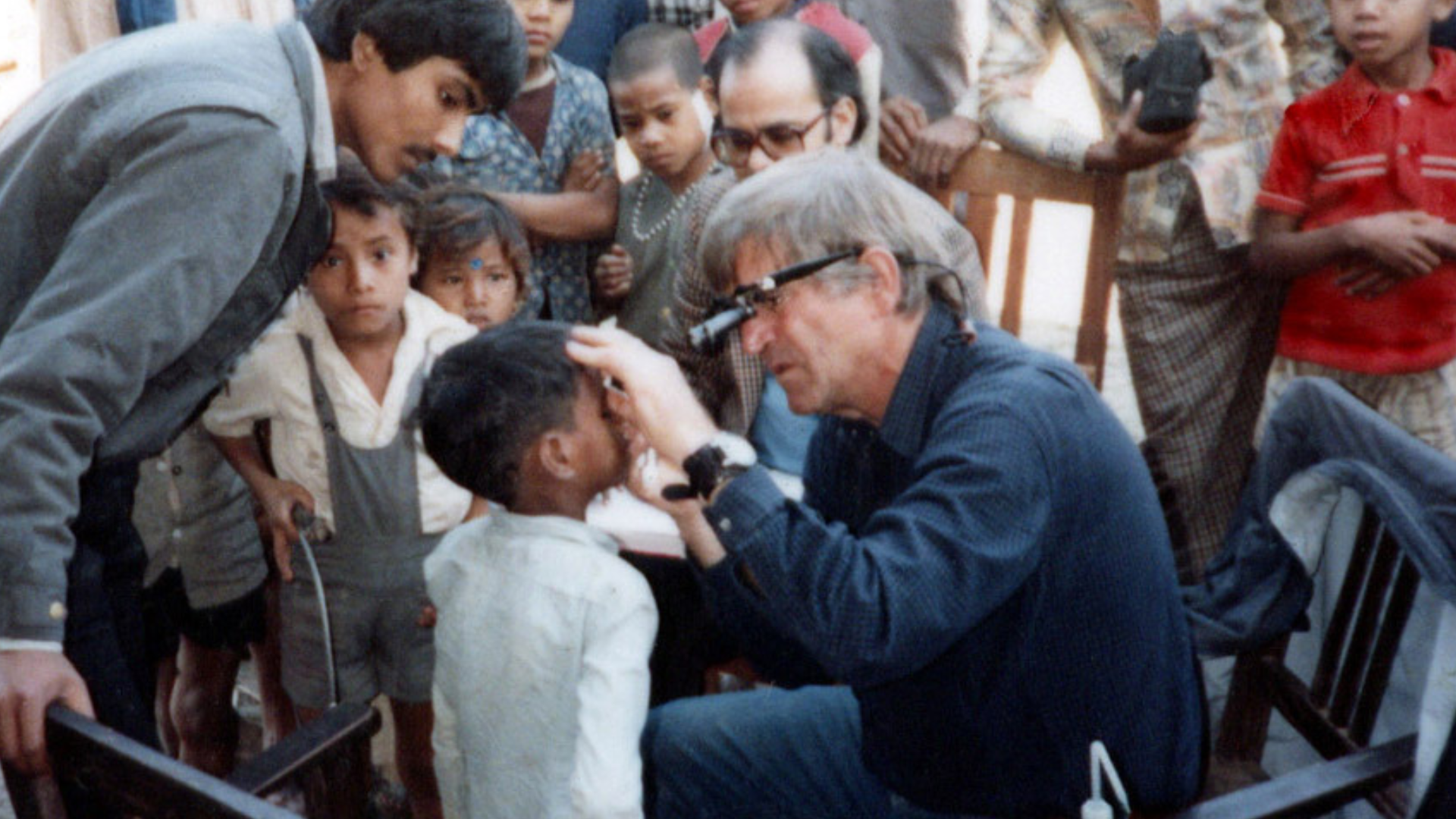How Fred Hollows made cataract surgery affordable for millions

Cataract surgery used to be out of reach for millions of people living in poverty. The biggest barrier was a tiny piece of plastic called an intraocular lens. Fred Hollows saw this injustice and set out to fix it. His determination helped make cataract surgery one of the most affordable and effective operations in the world today.
What is an intraocular lens?
 Photo credit: Michael Amendolia (Nepal, 2019)
Photo credit: Michael Amendolia (Nepal, 2019)
An intraocular lens, often called an IOL, is a small, carefully designed lens that replaces the natural lens of the eye during cataract surgery. It restores clear vision when the natural lens has become cloudy. Fred once described them as “the most expensive pieces of plastic in the world.”
The IOL is so central to our work that it appears in The Fred Hollows Foundation’s logo. It represents both medical innovation and the simple idea that everyone deserves the right to sight.
How does an IOL work?
The lens of the eye focuses light onto the retina so that we can see clearly. When a cataract forms, the lens becomes cloudy, and vision starts to fade. During cataract surgery, the cloudy lens is removed and replaced with an IOL, giving the eye a clear, synthetic lens that focuses light properly again. It’s a small change that restores sight and transforms lives.
Fred’s big idea: Make the lens affordable
In the late 1980s, cataract surgery was expensive because IOLs were expensive. A single lens could cost hundreds of dollars, putting surgery out of reach for millions of people. Fred believed this was wrong.
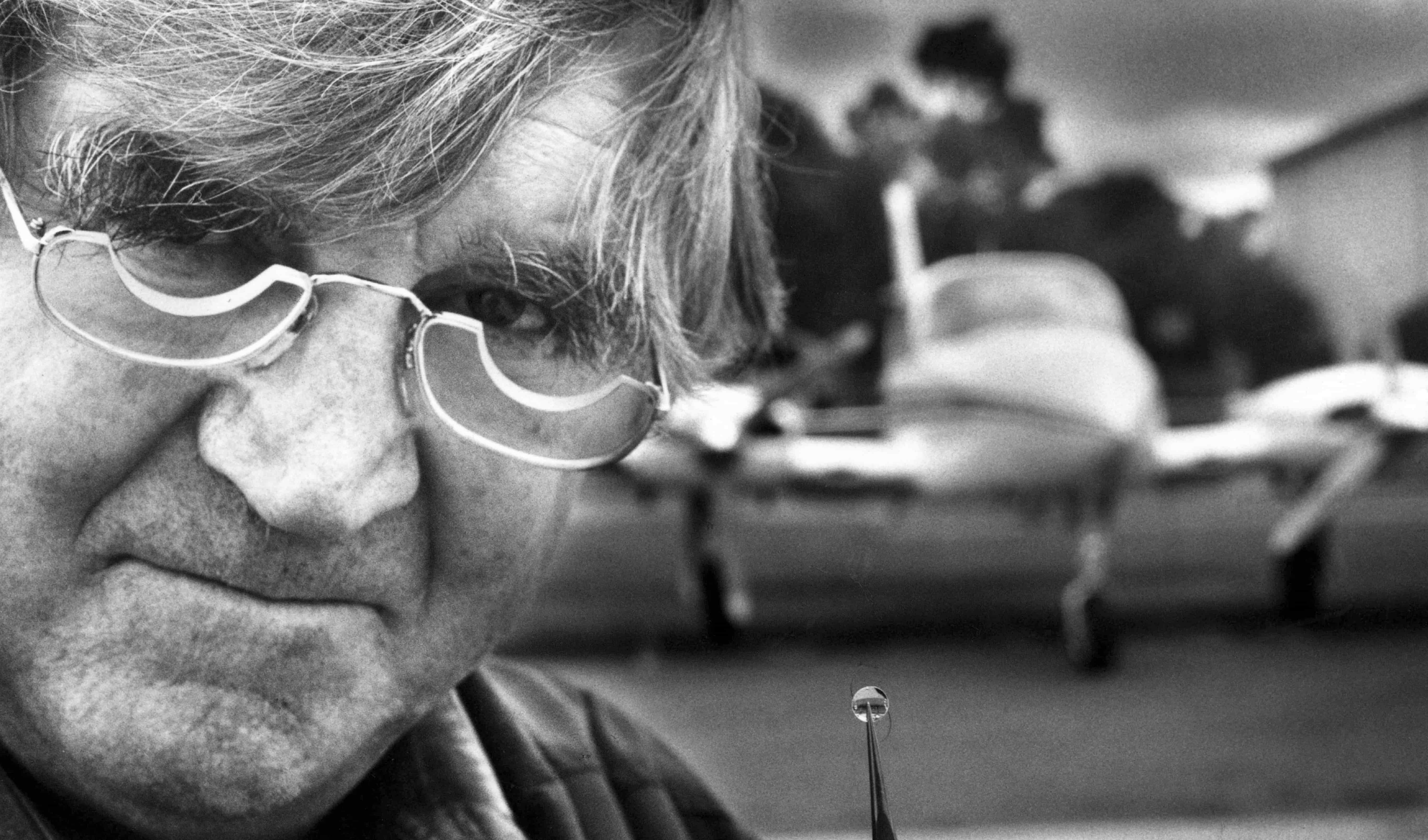
Professor Fred Hollows holds an intraocular lens made from PMMA perspex, the same material used in aircraft windows.
Photo credit: Newspix, 1992
“Good eye service is the right of everybody, not just the wealthy who can afford it,” he said.
Fred wasn’t interested in paperwork or bureaucracy. “I’m a hands-on ophthalmologist and teacher, and a hands-on researcher, and that’s what I like doing,” he said. “I hate making marks on bits of paper for administrators.”
He wanted to use his skills where they could make the biggest difference. “There’s a whole lot of things that need to be done in ophthalmology,” he told the University of New South Wales in 1992. “I proceed in areas where I think my efforts can be beneficially used.”
Fred’s solution to the high cost of IOLs was as practical as it was bold: build local factories that could produce high-quality, low-cost lenses.
From idea to reality: The IOL factories in Nepal and Eritrea
Before he died, Fred worked to set up two factories to manufacture affordable IOLs — one in Nepal and one in Eritrea. Both opened in 1994, fulfilling his vision of sustainable, locally led production.
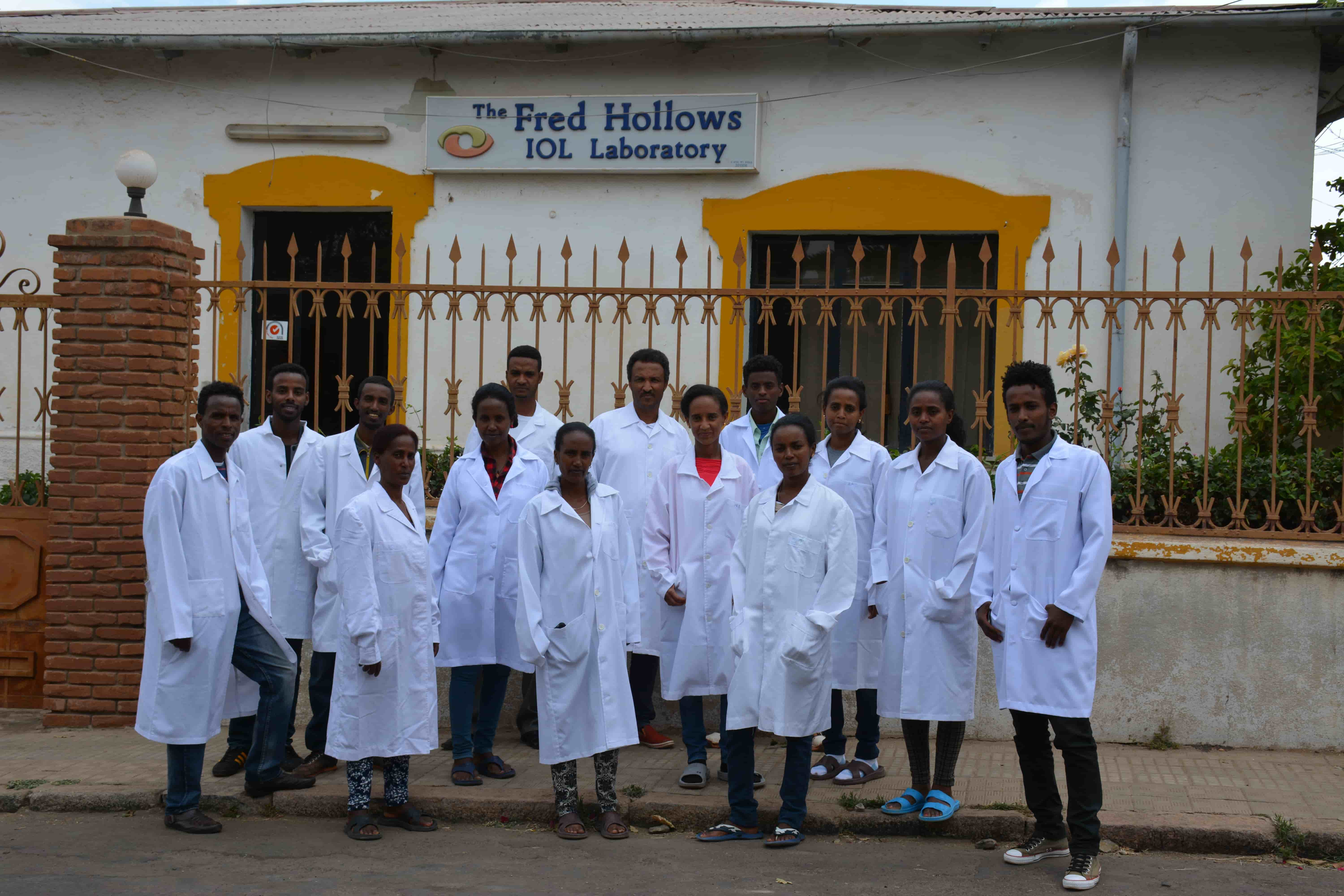 The Fred Hollows IOL Factory in Eritrea, 2017. Every lens made here contributes to preventing blindness and changing lives across Eritrea and beyond.
The Fred Hollows IOL Factory in Eritrea, 2017. Every lens made here contributes to preventing blindness and changing lives across Eritrea and beyond.
Photo credit: The Fred Hollows Foundation
“I want to see the establishment of a lens factory in Eritrea so that Africans can stop unnecessary blindness,” Fred said. “My aim is to buy the Eritreans’ time.”
Fred’s deep connection to Eritrea was recognised in 1990 when he was named the country’s first honorary citizen. It was a tribute to his tireless work alongside Eritrean doctors and health workers to prevent blindness and strengthen local eye care systems.
The factories he inspired continue to operate independently today. Together, they produce around 250,000 lenses each year and have distributed more than eight million since opening. These lenses are used in more than 50 countries, helping people who might otherwise remain blind.
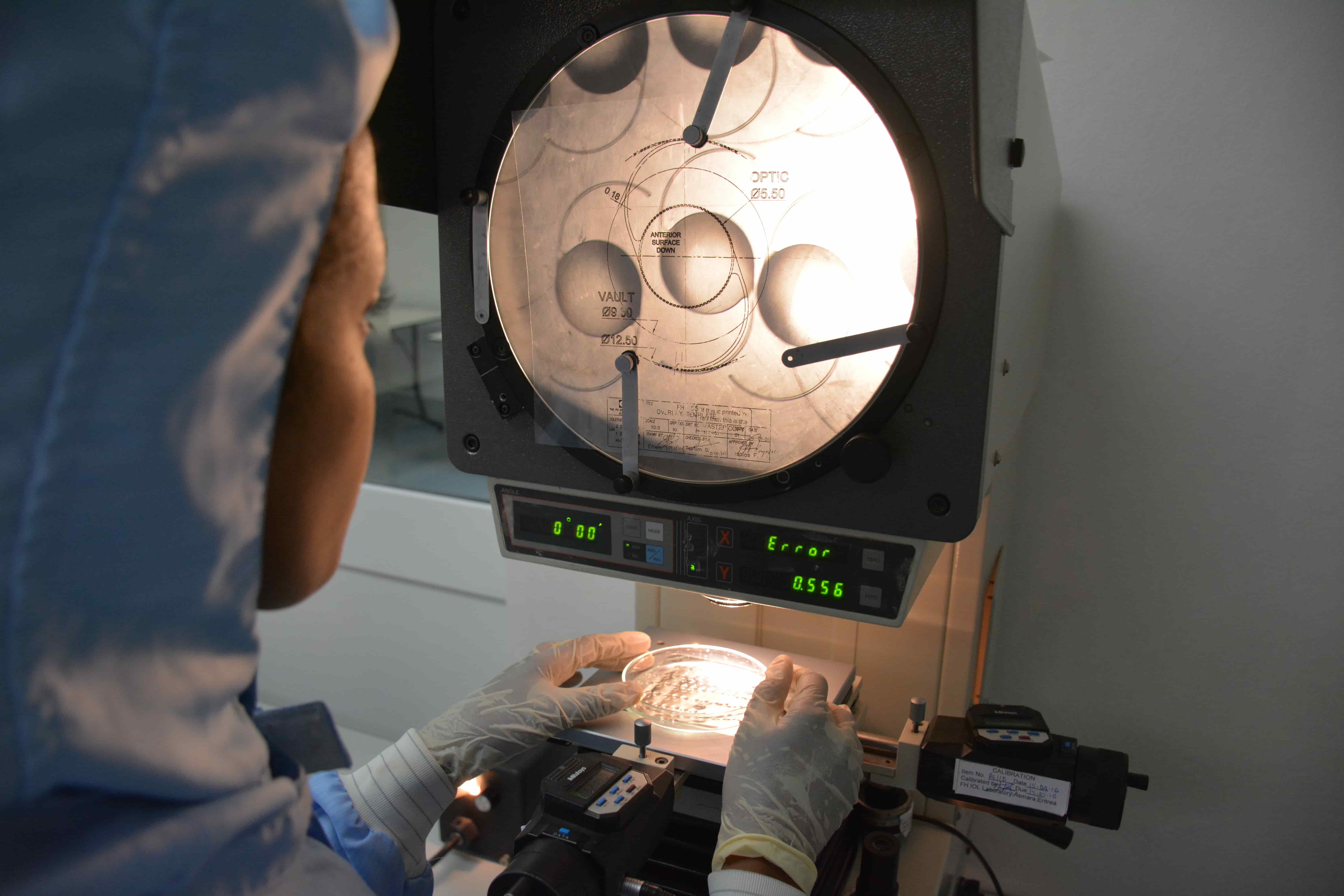 Photo credit: The Fred Hollows Foundation
Photo credit: The Fred Hollows Foundation
Fred hoped these factories would one day supply the entire continent. “We hope that Eritrea will be able to make IOL factories and export them to other African countries at a price they can afford,” he said. “Because Africa, if each factory makes 100,000 lenses, really needs only about 25 lens factories.”
Changing lives through affordable surgery
By reducing the cost of the IOL, Fred helped make cataract surgery affordable in many of the world’s poorest communities. Today, The Fred Hollows Foundation can support cataract operations for as little as $25. Each surgery restores sight and independence, giving people the ability to take part fully in daily life.
Fred once said, “It’s obscene to let people go blind when they don’t have to.” That belief still drives our work every day.
The factories he inspired not only restore sight but also create skilled jobs and new export opportunities for local economies. It’s a powerful example of Fred’s philosophy in action: help people to help themselves.
Fred’s legacy lives on
Fred Hollows’ work on affordable intraocular lenses transformed eye care forever. His passion for equality and his belief in “good, honest work” continue to guide everything The Foundation does today.
“Good, honest work,” Fred once said. “How many people have the opportunity to be part of that? To watch that sort of good surgery being done on cataract-blind people warms your soul.”
Fred’s vision still inspires surgeons, researchers, and supporters around the world. Every time someone opens their eyes after surgery, his legacy lives on.
 Tran Thi Den, 82, in Quang Nam province, Vietnam. Thanks to a low-cost intraocular lens, her sight and independence have been restored. Fred Hollows’ legacy lives on through people like Den.
Tran Thi Den, 82, in Quang Nam province, Vietnam. Thanks to a low-cost intraocular lens, her sight and independence have been restored. Fred Hollows’ legacy lives on through people like Den.
Photo credit: Michael Amendolia
You can help continue Fred’s vision
For as little as $25, you can help restore someone’s sight and change their life forever. Donate today or become a Visionary and help end avoidable blindness.
Related articles

14 reasons why we think Fred should be celebrated
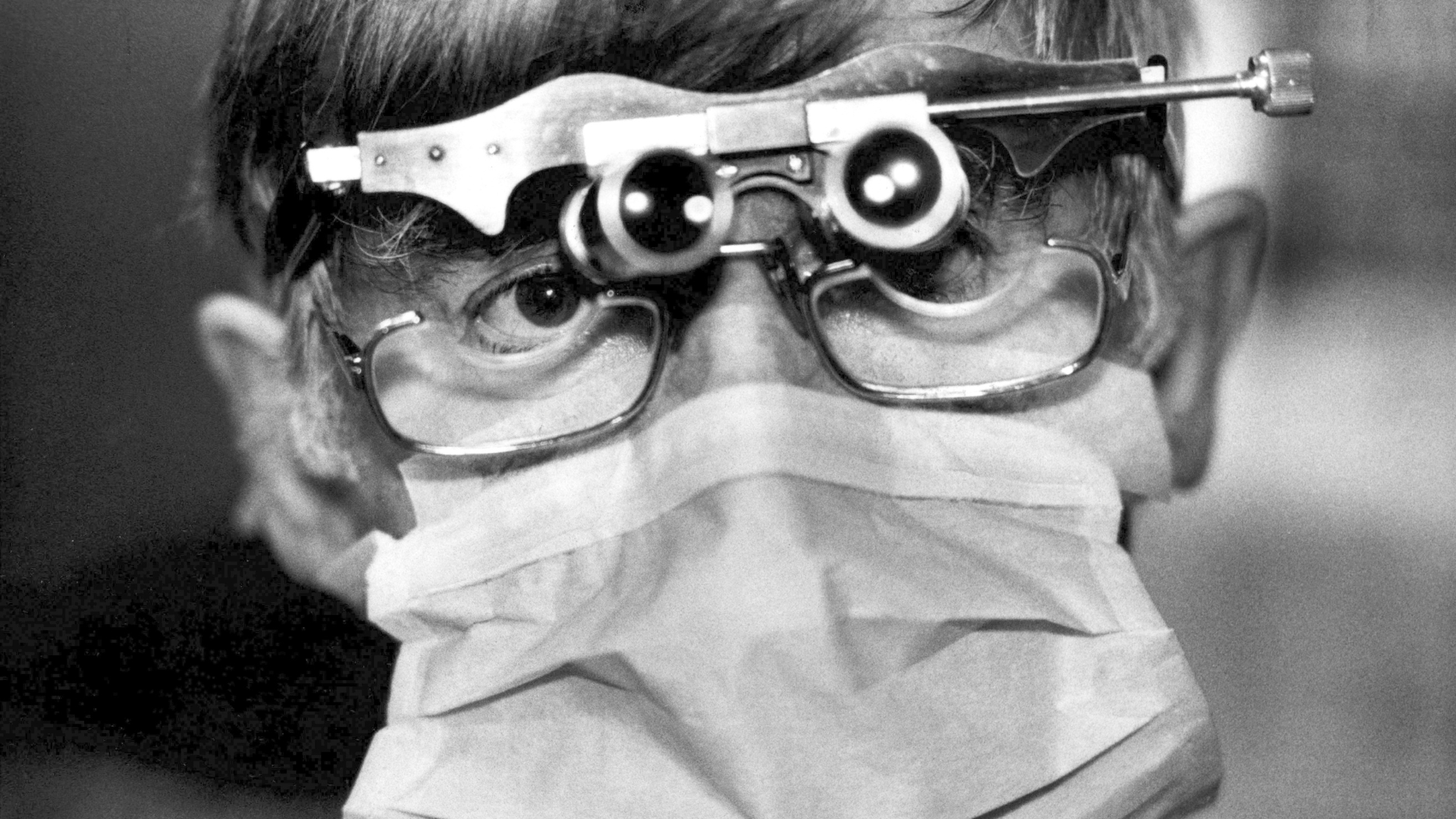
10 of Fred's most motivating quotes
